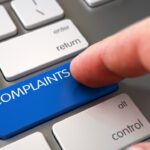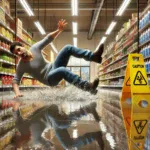Slip and fall accidents are a common occurrence in New York, often resulting in serious injuries and complex legal challenges. Therefore, understanding slip and fall laws in New York is essential for both property owners and individuals who have experienced such incidents. This comprehensive guide delves into the intricacies of these laws, providing clarity and insight for those navigating the legal landscape effectively.
1. What Constitutes a Slip and Fall Accident?
A slip and fall accident involves an individual slipping, tripping, or falling due to a hazardous condition on someone else’s property. Common causes include:
- Wet or Slippery Floors: For example, spills, wet surfaces, or inadequate drainage often lead to dangerous conditions.
- Uneven Surfaces: Broken tiles, uneven sidewalks, or potholes can create tripping hazards.
- Poor Lighting: Inadequate lighting may obscure potential hazards, increasing the risk of accidents.
- Obstructed Walkways: Cluttered pathways or improperly placed obstacles can impede safe movement.
In New York, determining liability in these cases hinges on establishing that the property owner or occupier was negligent in maintaining safe premises. Consequently, understanding these factors is crucial for both plaintiffs and defendants in such cases.
2. Overview of Slip and Fall Laws in New York
Slip and fall laws in New York are governed primarily by premises liability law. Under these laws, property owners have a duty to ensure their premises are safe for visitors. The level of care required varies depending on the visitor’s status—whether they are invitees, licensees, or trespassers.
a. Duty of Care for Property Owners
Property owners must regularly inspect their premises, address potential hazards promptly, and warn visitors of any known dangers. For instance, if a store owner fails to clean up a spill immediately, they may be liable for any resulting injuries. Failure to uphold these responsibilities can result in liability for injuries sustained during a slip and fall accident.
b. Comparative Negligence
Moreover, New York follows a comparative negligence system, meaning that the compensation awarded to a plaintiff may be reduced by their percentage of fault in the incident. For instance, if a victim is found to be 25% at fault for not paying attention to a wet floor sign, their compensation would be reduced accordingly. Therefore, understanding comparative negligence is vital for evaluating potential compensation.
3. Proving a Slip and Fall Case in New York
Successfully proving a slip and fall case requires establishing several key elements:
a. Duty of Care
First and foremost, the plaintiff must demonstrate that the property owner owed them a duty of care. This duty exists to ensure the safety of all visitors.
b. Breach of Duty
Next, it must be shown that the property owner breached this duty by failing to maintain safe conditions. For example, neglecting to fix a broken step would constitute a breach.
c. Causation
Additionally, the plaintiff must link the breach of duty directly to their injury. Without this connection, establishing liability becomes challenging.
d. Damages
Finally, the plaintiff must have suffered actual damages, such as medical expenses, lost wages, or pain and suffering. Therefore, documenting these damages is essential for a successful claim.
Real-World Example:
In a notable case, a customer slipped on a wet floor in a retail store. The court found that the store failed to place adequate warning signs and did not address the spill promptly. Consequently, the store was held liable for the customer’s injuries. This example underscores the importance of promptly addressing hazards to avoid liability.
4. Statute of Limitations
In New York, the statute of limitations for filing a slip and fall lawsuit is generally three years from the date of the accident. It is crucial to file within this period, as failing to do so may result in the case being dismissed, regardless of its merits. Therefore, acting promptly ensures that your legal rights are preserved and that evidence is fresh and accessible.
Key Point: Acting promptly not only preserves your legal rights but also enhances the strength of your case by ensuring that evidence remains available and reliable.
5. Common Defenses in Slip and Fall Cases
Property owners may employ several defenses to mitigate or eliminate liability in slip and fall cases:
a. Comparative Negligence
If the plaintiff is partially at fault, their compensation can be reduced. For example, if the plaintiff ignored warning signs, the property owner might argue shared responsibility, thereby reducing their liability.
b. No Notice
Moreover, property owners may argue that they had no prior knowledge of the hazardous condition and thus could not have addressed it. Without notice, establishing liability becomes more difficult.
c. Assumption of Risk
Furthermore, if the plaintiff knowingly and voluntarily exposed themselves to a known danger, this defense may be applicable. For instance, someone choosing to walk on a clearly marked slippery surface might be seen as assuming the risk.
Case Study: Uneven Sidewalk
A pedestrian tripped over an uneven sidewalk. The municipality was found responsible because it neglected to repair the sidewalk despite receiving multiple complaints. This case highlights that repeated negligence can lead to liability, even for public entities.

6. Seeking Legal Assistance
Navigating slip and fall laws in New York can be complex. Consequently, consulting with an experienced personal injury attorney can significantly enhance the chances of a successful outcome. Legal professionals can help gather evidence, negotiate with insurance companies, and represent the plaintiff in court if necessary.
Benefits of Legal Representation:
- Expert Guidance: Understanding the nuances of slip and fall laws is essential, and attorneys provide this expertise.
- Evidence Collection: Ensuring all relevant evidence is preserved and presented strengthens your case.
- Negotiation Skills: Securing fair compensation through skilled negotiation is a key advantage.
- Court Representation: Providing robust advocacy in legal proceedings can make a significant difference in the outcome.
Therefore, seeking legal assistance is a strategic step toward achieving a favorable resolution.
7. Preventative Measures for Property Owners
While the focus often lies on legal recourse post-accident, property owners can take proactive steps to prevent slip and fall incidents:
- Regular Inspections: Conduct routine checks for hazards to identify and address issues promptly.
- Prompt Repairs: Address any identified issues immediately to mitigate risks.
- Clear Signage: Use warning signs in areas prone to hazards, such as wet floors or uneven surfaces.
- Adequate Lighting: Ensure all areas are well-lit to prevent accidents caused by poor visibility.
- Maintenance Plans: Implement comprehensive maintenance schedules to consistently uphold safety standards.
External Resource: Occupational Safety and Health Administration (OSHA) Guidelines
By adopting these measures, property owners can significantly reduce the likelihood of slip and fall accidents, thereby minimizing potential liabilities.
FAQ
A1: First, seek medical attention. Then, document the accident scene, gather witness information, and contact a personal injury attorney as soon as possible.
A2: Yes, New York follows comparative negligence, allowing you to file a lawsuit even if you are partially at fault. However, your compensation may be reduced by your percentage of fault.
A3: You generally have three years from the date of the accident to file a slip and fall lawsuit.
A4: You may recover medical expenses, lost wages, pain and suffering, and other related costs resulting from the injury.
A5: While it’s not mandatory, having an experienced attorney can significantly improve your chances of a favorable outcome.
Key Takeaways
- Duty of Care: Property owners in New York must maintain safe premises to prevent slip and fall accidents.
- Comparative Negligence: Compensation may be adjusted based on the plaintiff’s degree of fault.
- Statute of Limitations: Lawsuits must be filed within three years of the accident.
- Proving Liability: Establishing duty, breach, causation, and damages is essential for a successful claim.
- Legal Assistance: Consulting a personal injury attorney can enhance the effectiveness of your case.
Read More: Do Hospitals Usually Settle Out of Court?
External Resources
- New York State Unified Court System
- New York State Department of Labor
- FindLaw: New York Slip and Fall Laws
- Occupational Safety and Health Administration (OSHA)
Understanding slip and fall laws in New York is crucial for both property owners and individuals who have experienced such accidents. By knowing your rights and responsibilities, you can navigate the legal process more effectively and seek the compensation you deserve.

Jonathan Hartley is a highly regarded senior criminal lawyer with over 15 years of experience in the UK legal system. He began his career at a prestigious law firm in London, where he specialized in both defense and criminal law. Known for his ability to craft compelling defense strategies, Jonathan has successfully represented clients in high-profile cases and earned multiple awards for his contributions to the field of law.
In addition to his legal practice, Jonathan is also an accomplished legal writer, contributing articles to top legal blogs and online platforms. His work not only provides valuable insights into legal matters but also meets Google’s E-E-A-T standards by delivering accurate, reliable, and trustworthy information to readers. Committed to legal ethics and public welfare, Jonathan actively participates in discussions on law and justice while educating the public through his writing.










